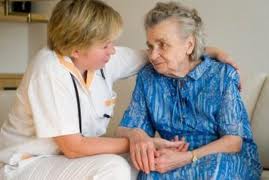
Five Tips for Providing Effective Patient Education

Teaching patients is an important aspect of nursing care. Whether teaching a new mom how to bathe a newborn baby or instructing an adult who is living with a chronic condition, the success of the individual is greatly impacted by the quality of the nurse’s instruction and support. Here are some tips that may help you when you are assisting your patients to cope with their health challenges.
Take Advantage of Technology
Technology has made patient education materials and guidelines more accessible. Many health care facilities have educational resources which may be customized and printed out for patients with the touch of a button. Internet sources abound as well. Take advantage of these resources. You do not have it reinvent the wheel for each patient.
Be certain that the patient’s individualized needs are addressed. Do not simply hand the patient a stack of papers to read. Review them with the patient to ensure that he or she understands the instructions. Answer questions which arise. Some resources are available in several languages.
Determine the Patient’s Learning Style
Similar information may be provided by a range of techniques. In fact, providing education using different modalities reinforces teaching. Patients have different learning styles. Find out if your patient learns best by watching a DVD or by reading. A hands on approach by which the patient gets to perform a procedure with your guidance is usually the best method. If using written materials, gently determine how well your patient is able to read and comprehend information. Many adults are intelligent and function very well yet are unable to absorb and utilize the instruction.
Stimulate Your Patient’s Interest
It is essential that your patient understand “what’s in it for him or her”. Adult learners want instant gratification. You must become skilled at determining what is important to each particular patient. Establishing rapport, asking questions, and considering specific patient concerns are essential. For example, some patients may want detailed information about every aspect of their health condition. Other may want “just the facts” and do better with a simple checklist.
Consider Your Patient’s Limitations and Strengths
 Does your patient have physical, mental or emotional impairments which impact his or her abilities to learn? Are large print materials available and useful for a particular patient? If your patient is hearing impaired, use visual materials and hands on methods instead of simply providing verbal instruction. Always have patients explain what you taught them. Often people will nod "yes” or say that they comprehend what is taught even if they have not heard or understood what you meant. Consider factors such as fatigue and the shock of learning a critical diagnosis when educating patients.
Does your patient have physical, mental or emotional impairments which impact his or her abilities to learn? Are large print materials available and useful for a particular patient? If your patient is hearing impaired, use visual materials and hands on methods instead of simply providing verbal instruction. Always have patients explain what you taught them. Often people will nod "yes” or say that they comprehend what is taught even if they have not heard or understood what you meant. Consider factors such as fatigue and the shock of learning a critical diagnosis when educating patients.
Include Family Members
Involving family members in patient teaching improves the chances that your instruction will be utilized. In many cases, it will be the family that you will be providing most of the instruction to. Families play a critical role in health care management. For example, when instructing families of geriatric patients who do not eat well, stress the importance of the social aspects of eating. It is not enough for a family member to simply provide a healthy meal. Studies indicate who a person eats with and the environment in which they eat, have direct effects on how much food is consumed.
Teaching patients and their families can be one of the most challenging and rewarding parts of providing nursing care. Excellent instruction improves patient outcomes dramatically. It is one of the most creative and intuitive aspects of nursing. These are just a few tips for you to consider. I am sure that you have a variety of tips that work for you. Be generous and share your ideas with others.
Related Articles
Featured Article





